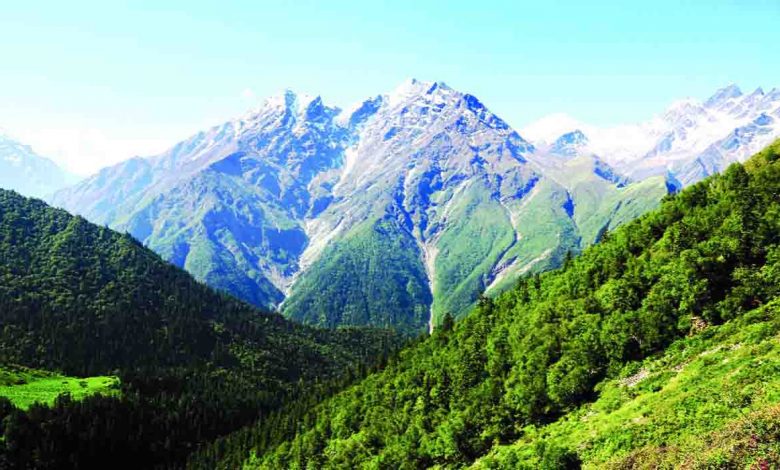Harela and the ground reality

Monday, 26 July 2021 | RP Nailwal | Dehradun
GUEST COLUMN
 RP Nailwal
RP Nailwal
Efforts to conserve greenery are ingrained in the popular ethos and local festivals of the hill folk in the form of Harela and Maiti celebrations. Evolved over the generations with a view to protect and preserve nature, festivals such as these have come a long way in inspiring the people to plant trees whenever and wherever possible.
Even though Harela, the popular local festival of Kumaon region, is now officially celebrated every year in the state for past few years, the Maiti movement of Garhwal also needs to be given equal importance. Inspiring this movement, the brave environment warriors like Gaura Devi, Kalayan Singh and Jagat Singh are among the few names, who have relentlessly fought for not only the conservation of greenery at their own level but also planted thousands of trees in the rugged Garhwal Himalaya slopes. They are the unsung real heroes, so to say.
The Maiti festival celebrated particularly in the Chamoli district of Garhwal, essentially involves tree plantation initiative by young married couple in the courtyard of the newly-wed girls’ original homes (Mayka or Mait). Not many know that this festival exhibits a kind of pomp and grandeur for the rural participants. But underlining essential message is promotion of tree plantation.
However, still the pointy to ponder is: greenery conservation in the state whither to? The regular reports on summer wildfires and resultant destruction of birds and animal habitats, indiscriminate felling of trees and poaching seem to belittle all the efforts by the hillfolk.The question which often makes rounds among the environmentalists is about the frailty of forest and wildlife conservation laws to gain the desired results.
One could understand and estimate how over the decades, millions of trees in our central Himalayan region have been either gutted or felled for the construction of roads, bridges and hydro power projects but the least expectation of the people from the forest department was to go an extra mile to conserve the remaining green cover. Interestingly, the situation before the formation of Uttarakhand state was really not so good when reports about encroachment of forest land, illegal felling of trees and poaching often made headlines but the state of affairs seems to have gone from bad to worse. Scores of media reports are a pointer to this fact.
Its worth mentioning here how in recent times the ongoing construction of Char Dham rail project has caused large -scale felling in the hilly areas.The mega project involves construction of tunnels and bridges apart from the railway stations in the rugged Garhwal mountains. As it were, the construction of scores of government buildings, the all weather road and Hemkund Sahib Road has already inflicted a heavy damage to the green landscape in the major part of Garhwal region. In fact, there was report published by FRI scientists some years ago that about ten central Himalayan tree species have already gone into extinction.
The voice raised by some native environmentalists like Chandi Prasad Bhatt and Sundar Lal Bahuguna against the plunder of local ecology had often fallen on deaf ears. Mind you, Chandi Prasad Bhatt, who is based at Gopeswar, is an internationally recognised environmentalist and a Magsaysay award winner. Newspaper stories on clandestine felling or poaching or Sal borer infestation in Sal forests did not seem to cause concern among the decision-makers. Obviously, either there seems to be total lack of understanding of key issues pertaining to environment conservation or officials and others are not so much exercised over the grim situation. Therefore, the big noise over non-acceptance of the green bonus demand of the State government by the Central government seems to be lacking logic. The natural question which comes to mind is: when you can’t protect your forests and wildlife, how can you ask for green bonus?
Interestingly, it was in 1981 that the then government at the Centre set up Forest Survey Of India (FSI) in Dehradun with a view to promoting studies and research in sustainable management of forests, their resources and survey of country’s forest cover etc. Even the job of scientific prediction of wildfires had been entrusted to FSI some years ago.
But the ground situation seems to have remained unchanged to a large extent. The Forest Research Institute (FRI) set up as far back as 1906 in Dehradun, by British rulers is the premier institute of the country engaged in forestry research with the aim to push lab- to- land programmes as well. Yet, much more needs to be done at the implementation level. Therefore, the local ecology- oriented festivals such as Harela and Maiti definitely become much more meaningful in the context of keeping the environmental awareness alive.
(The author is a veteran journalist based in Dehradun. Views expressed are personal)






